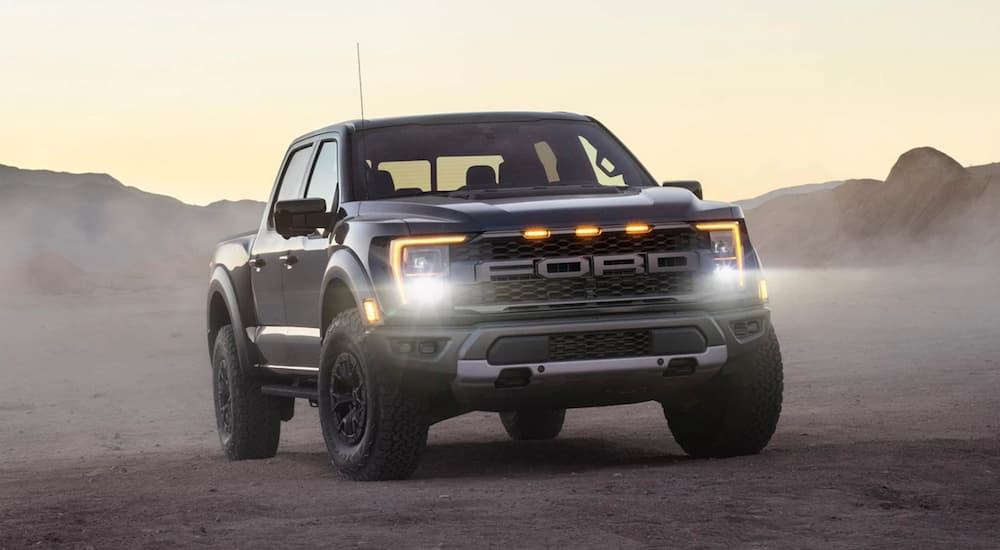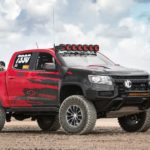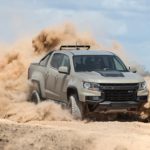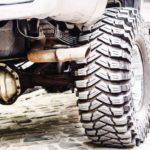Just because someone says they’re into off-roading doesn’t mean they’re into every kind of off-road activity that the great outdoors has to offer. Likewise, some people are really heavy into the more challenging aspects of off-road culture; some people are only interested in hill climbs, others are only down with dirt trails, and maybe a few others only think fording is the right way to truck off the beaten path. In some cases, if you have a lifted truck, there’s a little something-something called mudding or bog racing. Maybe you’ve recently looked into Rocky Ridge off-road trucks and thought about trying your hand at something a little more off the already off-beaten path of off-road driving, and you thought mudding might be a good way to go? Well, there are some things you should know before you dive headfirst into throwing your truck axle-deep into a sludge pit.
First Off, What Is Mudding?
If the first paragraph didn’t properly identify to you what mudding is, it’s essentially the activity of taking a truck or vehicle outfitted with the right kind of suspension, tires, and power plant to trek through muddy trails, swamps, pits, or stretches of mud-filled track. The idea is to purposely plow through the bog with your truck from one end of the muddy terrain to the other.
It might seem silly to some people, but it’s no different than rock crawling or hill climbing. It takes an incredibly powerful and well-outfitted machine to be able to conquer most mudding trials. The skill is in being able to have enough power to mow through the heavy and thick mud, but also enough traction and torque to prevent the vehicle from getting stuck. If that sounds like a real challenge to you, it’s because it is a real challenge for a lot of vehicles.

Do You Even Lift, Bro?
You might be thinking that you have 35-inch tires, a turbo-diesel, and a reinforced frame, so you’re ready for any off-road task. Or maybe, you have a supercharged V8 with a lot of low-end torque at the ready, sway-bar disconnect, and front and rear e-lockers, and you’re good to go. All you need is a full-time four-wheel drive, and you can go mudding, right? Not quite. You need to slow down and realize that torque isn’t actually the most important thing when it comes to mudding, but it sure is close. You actually need lift.
Yes, a suspension lift kit is essential for proper mudding; otherwise, you will get stuck, you may even damage the drivetrain, or mess up the undercarriage of the truck. This is why it’s important to have a properly lifted truck, not just one that clears 8 to 10 inches of the ground. But you’re going to need an extension on the suspension with enough lift so that there’s a clear distinction between the tires sludging through the mud and the body of the truck not being submerged in said mud.
If you’re curious about how much lift you need exactly for mudding, well, that all depends on what kind of mudding you plan on doing. If you’re only going to be doing some light mud trekking less than a couple of inches thick, then you could definitely get by with a standard lift kit. But, if you plan on mudding as if you were going fording, then you’re definitely going to need a much higher lift on the truck to trek through the bog. Essentially, you need to consider what sort of mudding activity you’re going to be engaging in and how extreme it’s going to be, as that will determine what sort of truck you’ll need for the task and how it should be outfitted and lifted for your outdoor, off-road activities.
Do You Need a Specific Type of Truck for Mudding?
Typically whenever someone is just getting into a specific kind of vehicular activity, it’s important to have the right kind of vehicle, tools, and modifications to get the most out of it. For instance, having the right kind of suspension and boost setup for drifting or having the right kind of transfer case and four-wheel drive system for rock crawling. Well, the same thing applies with mudding. Some trucks and their configurations are typically going to be better for mudding than others.
For instance, a stock midsize truck would probably be the worst way to go for mudding. You would need to completely overhaul nearly every aspect of the powertrain, the drivetrain, and the suspension. However, you would probably fare somewhat better with a stock light-duty truck depending on the trim and the setup. Even still, stock won’t get you very far with mudding unless you’re rocking a Chevy ZR2, a Ford Raptor, or a Ram TRX. Even then, you’ll probably still need to make some adjustments to get the most out of the vehicle.
A good starting point makes all the difference, though. Heavy-duty trucks, for instance, usually come with the sort of powertrain setup that makes it easy to get into things like off-roading, including hill climbs and mudding, because many heavy-duty variants come equipped with powerful engines designed around maximizing torque. This is an essential piece of completing the mudding puzzle. Heavy-duty variants also usually have reinforced frames with modified suspensions, designed for the most part to handle a lot of heavy payloads and tens of thousands of pounds of towing, which again makes them great for trudging through bogs without the frame getting bent out of shape or the suspension getting twisted into oblivion.
Even if you don’t go with a heavy-duty variant, you can still make do with a light-duty truck if it’s outfitted properly. Plus, light-duty trucks are lighter than their heavy-duty counterparts, and that makes it easier for them to avoid the gross vehicle weight bogging them down in the sludge. The right kind of engine, the right kind of transmission, the right kind of differential, dampers, wheels, and tires can make all the difference in the world. If you opted for a lifted vehicle from places like Rocky Ridge off-road trucks, you’re already going to be tuned into tackling off-road activities, like mudding, with relative ease.
Tires, Springs, and Drivetrains
Whether you’re planning on doing casual mudding or extreme mudding, you will need to make sure that your truck is suitably outfitted for the task at hand. This means it needs a very durable transfer case, reinforced differentials, and a proper suspension system with heavy-duty dampers. Why? Because when mudding, you will need the best traction you can get, and that means working the engine overtime so the driveline can spin very large tires on axles that are more than likely moving through or submerged under mud. Transferring the right kind of power to the wheels that need it most is a must. That’s also why it’s important to have an engine with a ton of low-end torque.
The right kind of tires are also important. The higher the lift is on the truck, the taller the tire you can fit on the truck. The taller the tire, the more likely the wheel will be able to touch the ground beneath the mud, which is where it will need to gain traction. Otherwise, if the tires are floating on or through the mud due to how deep it is, paddle tires or sand tires are probably going to be a better option. However, the paddle tire option is usually reserved for extreme mudding rather than entry-level mudding.
The Big Takeaway
Even still, the big takeaway from mudding in a lifted truck is that the truck needs several things to be successful in mudding. It needs to be durable, it needs to be lifted high enough so that none of the electronics or the filters get submerged and clogged with mud, and it needs to be powerful enough to propel the truck through light or thick levels of mud. It may sound like a simple thing (or not), but having the basics down can really help you get started with mudding and avoid any unnecessary pitfalls as you lean into the muddy pastime.





